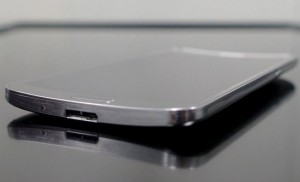The latest press renders of the Samsung Galaxy S7 and the Galaxy S7 Edge, the upcoming flagship smartphones from the Korean tech giant, showed one glaring feature that actually looks odd given the current trend in modern communication devices these days.
Apparently, Samsung has skipped using the USB Type-C port on its 2016 flagship smartphones, due to be launched in the last week of February during the Mobile World Congress (MWC) 2016 to be held in Barcelona, Spain and will stick with the tried-and-tested microUSB port.
It's actually a big deal, particularly for gadget critics because USB Type-C port is the future of connecting stuff to other stuff.
When all mobile devices and other computers eventually adopt the USB 3.1 standard, featuring faster data speeds and quicker charging that it entails, Type-C will be the port that shall enable it, details Android Central.
Type-C connectors are now a common feature in several Android smartphones including the forward-looking devices like the Google's 2015 Nexus phones and the OnePlus Two, as well as the Nexbit Robin.
Apple has likewise started using it last year with the Apple MacBook and it is likely to be featured in the upcoming 2016 MacBook Air and the 2016 MacBook Pro.
Google's second-generation Chromebook Pixel and the Pixel C tablet also feature the USB Type-C connector.
A painful transition
While Samsung has not made any statement or announcement why it was sticking to the good old microUSB port with its upcoming flagship smartphones for 2016, it is possible that Samsung wants to free its users from the painful and annoying transition.
Although USB Type-C is technically superior and less frustrating to plug in, it is nonetheless muddy and nuanced. It does not necessarily mean that something that uses USB Type-C connector also uses USB 3.1.
It is likely that the next generation of Android smartphones that would launch this year would feature the USB 3.1 but there is no guarantee that any of the Galaxy S7's immediate competitors will be among them.
Although there is still no substitute for faster-wired data transfers on smartphones, it is already being weakened by the fact that many users now use the cloud, not a USB cable, to get stuff on and off their smartphones.
A different-shape fingerprint-sensing Home button
Based also on the recent press renders of the Samsung Galaxy S7 and the Galaxy S7 Edge, quite noticeable is the presence of the fingerprint-sensing Home button.
The shape clearly looks deformed along the bottom portion. The Home button on the Galaxy S7 Edge looks to be tilted slightly downwards. It also has a different shape than that seen on the Galaxy S6 and the Galaxy S6 Edge, notes the Android Authority.
One of the press renders of the upcoming Samsung flagship smartphones also showed the Galaxy S7 having a curved back side like the Galaxy Note 5, and that differentiate it from the design of the Galaxy S6.
The general notion is that the Galaxy S7 Edge will be larger than its standard sibling just like in the case of the Galaxy S6 Edge last year.
However, until Samsung formally announces the new pair of its 2016 flagship smartphones, the world can only wait with baited breath. But the wait would just be a matter of weeks since the MWC 2016 is just around the corner already.
Early this month, there have been reports that instead of just two variants of its upcoming flagship smartphone, Samsung shall reportedly launch three and they would be called as the Galaxy S7, the Galaxy S7 Edge, and the Galaxy S7 Edge+.
It can be recalled that Samsung has also launched the Galaxy S6 Edge+ in August last year, some five months after the official unveiling of the Galaxy S6 and the Galaxy S6 Edge.
Page 1 of 212»Source: Samsung Galaxy S7 to Stick with Tried-and-Tested MicroUSB Connector Instead of USB Type-C Port

No comments:
Post a Comment